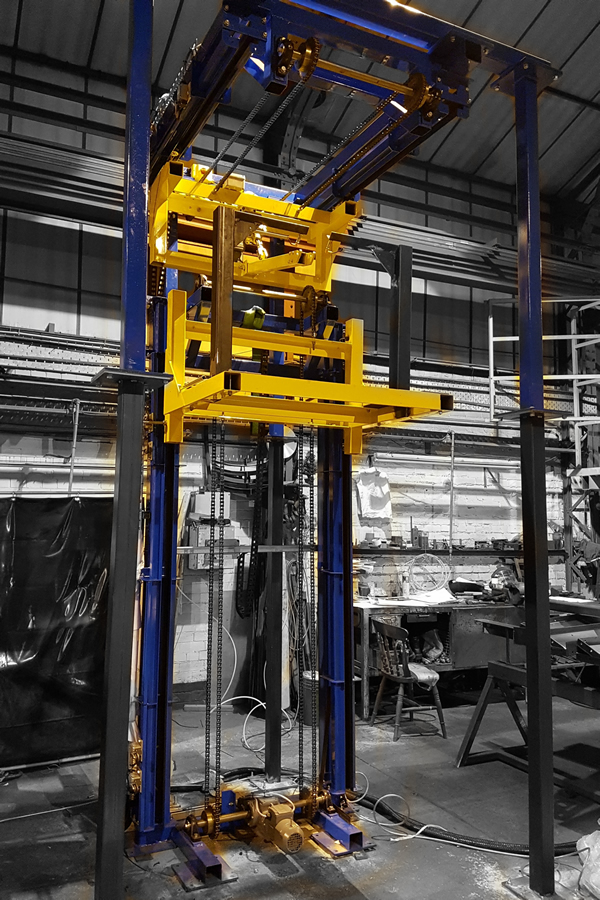Leading Lift Companies in London: Delivering Exceptional Service and Assistance
Wiki Article
Looking Into the World of Lifts: Usual Issues Encountered by Various Lift Mechanisms
As we navigate with the upright transportation systems of modern buildings, elevators stand out as a vital part of our day-to-day lives. From hydraulic lifts to grip systems and machine-room-less styles, each lift kind comes with its set of common issues.Hydraulic Lifts
Hydraulic elevators, commonly preferred for low-rise buildings, utilize fluid stress to manage the activity of the elevator car (lift repair companies). This device entails a hydraulic pump pushing oil into a cyndrical tube, causing the lift to relocate the preferred direction. While hydraulic elevators are known for their smooth and silent procedure, they do come with their very own set of common concernsOne widespread trouble with hydraulic elevators is oil leakage. The seals in the hydraulic system can break in time, leading to oil seepage. This not only creates a mess yet can likewise impact the elevator's efficiency if left unaddressed. In addition, issues with the control system, such as malfunctioning shutoffs or a malfunctioning pump, can trigger disturbances in the elevator's movement.
Routine upkeep and timely fixings are vital to make sure the smooth performance of hydraulic elevators. By resolving these typical issues proactively, structure owners can reduce downtime and make certain the security and performance of their vertical transportation system.
Traction Lifts
When considering upright transportation systems in structures, another usual type aside from hydraulic elevators is the traction elevator. Grip lifts operate using a system of ropes and weights that move the lift vehicle by gripping onto the hoist ropes. This device enables smoother and much faster vertical transportation contrasted to hydraulic systems.Among the common problems dealt with by grip elevators is rope wear. The consistent motion of the ropes within the grip system can cause tear and use gradually, possibly triggering the elevator to malfunction or become risky for use. Routine inspections and upkeep of the ropes are necessary to make certain the lift's proper performance and safety.
Another issue that traction lifts may encounter is related to the control system. Troubles with the control system can lead to issues such as erratic motion, hold-ups in response times, or even complete shutdowns. Regular screening and maintenance of the control system are critical to stop such concerns and ensure the lift's reliability.
Machine-Room-Less (MRL) Lifts

One of the essential parts of MRL lifts is the portable gearless traction device that is mounted within the hoistway. This maker effectively drives the lift auto without the need for large tools found in standard traction elevators. Additionally, MRL lifts commonly make use of a weight system to balance the automobile, additional boosting their power effectiveness.
Regardless of their advantages, MRL lifts may deal with challenges associated with repair and maintenance as a result of the confined space for tools installation. Accessibility for servicing elements within the shaft can be restricted, calling for specialized training for professionals. Correct maintenance schedules and routine assessments are essential to guarantee the continued smooth operation of MRL elevators.
Overloading and Weight Restriction Issues
Overloading and weight restriction concerns are important issues in elevator operations. Elevator suppliers layout lifts with specific weight capacities to make sure guest safety and equipment durability.When elevators are strained, it puts too much strain on the motor, wires, and various other elements, possibly creating malfunctions or failures. Safety devices such as sensing units and overload sensing units remain in location to protect against elevators from moving if they find excess weight. Additionally, exceeding weight limitations can lead we maintain lifts to enhanced energy usage and wear and tear on the lift system.
To reduce overloading issues, building managers must prominently display weight limitations in elevators and educate residents on the value of adhering to these restrictions - lift repair companies. Regular maintenance checks by certified service technicians can additionally aid guarantee that lifts are operating within safe weight criteria. By addressing overloading and weight limitation issues proactively, structure proprietors can boost lift safety and performance
Electrical System Failings
Going beyond weight limitations in elevators can not just lead to mechanical problems yet also potentially contribute to electrical system failings within the lift facilities. Electric system failings are a crucial problem in elevator procedure, as they can trigger unexpected closures, breakdowns, or also safety and security dangers.Regular upkeep and assessments are crucial to determine and deal with potential electrical concerns quickly, making sure the effective and risk-free procedure of elevator systems. By sticking to weight limits and performing regular electrical system checks, building owners lift repair near me can alleviate the risk of electrical failures in lifts.
Conclusion

Hydraulic lifts, often chosen for low-rise structures, use fluid pressure to regulate the movement of the lift car.When considering upright transport systems in structures, one more usual type apart from hydraulic lifts is the grip elevator. Grip elevators operate making use of a system of ropes and counterweights that relocate lift companies in London the elevator auto by grasping onto the hoist ropes. Unlike traditional lifts that require a separate machine space to house the tools, MRL elevators incorporate most of the elements within the shaft, removing the requirement for a dedicated device area.In conclusion, lifts encounter common concerns such as hydraulic malfunctions, traction system failings, and electric system problems.
Report this wiki page